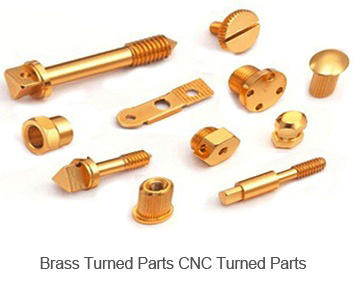Brass is a substitutional alloy of copper and zinc that are mixed in desired proportions to get required mechanical and electrical properties. It can be used in places of low friction like locks, gears, doorknobs, and valves. It is highly used in making various musical instruments as well. Brass turned parts have both applications in household materials as well as for industrial purposes. Some of the major advantageous properties are mentioned below:
- Malleability: Brass has a relatively lower freezing point, around 900-940°C due to which it is highly malleable than bronze or zinc. It is easy to cast and it can be easily changed by changing the proportions of copper and zinc.
- Recyclable: Brass can be easily recycled as it is not ferromagnetic and hence can be easily separated from ferrous scrap by passing the scrap near a powerful magnet.
- Corrosion resistant: The CR or corrosion resistant brass are used in places of high corrosion risk where normal brass cannot meet the requirements due to high corrosion risks.
- Germicidal and antimicrobial properties: Brass prevents bio fouling due to its germicidal properties. It kills microorganisms within minutes or hours of contact.
- Spark resistant: The composition of brass helps in resisting sparks. It does not affect the brass part and is hence used in parts where there is a high risk of being affected by sparks.
Brass has been quite popular since a long period of time and is used in making various products for households as well as for various industries.Brass has a wide range of versatility and has its applications almost everywhere. Some of which include:
- Ammunition Casting: Brass is known for its spark resistant, low friction, and corrosion resistant and none magnetic properties. It can be easily rolled and turned to cartridge shells. Its recycling properties help in ammo reloading.
- Marine hardware: Brass is hard and corrosion resistant even in presence of salt water. It has been used for centuries as breathing on hulls of wooden naval ships, for navigational tools and for making engines and pumps.
- Radiator core, tubes, and tanks:Brass radiators for cars and trucks are cheaper than aluminum radiators. They are easy to manufacture, has long lasting properties and are recyclable which turns out to be much more efficient. Brass turned parts have a lower air side pressure drop than aluminum.
- Electronic components: Brass has properties of being malleable, non-magnetic, and its cost is less than gold and silver. This makes it an excellent choice for making panel board switches, PCB plug pins, sockets, and terminal box.
- Musical instruments: The durability, work ability, and acoustic properties of brass makes it an excellent and an economic choice for making a wide range of musical instruments like trumpets, tubas, trombones, cymbals, gongs, etc.
- RV water pressure and elbow fitting: It is much stronger and tougher than plastic. Brass turned parts can stand up to high water pressure and reduce it to a manageable level for using in RVs.
- Technical instruments: Brass being nonmagnetic has a high application in making measuring instruments like compasses, astrolabes, barometers, chronometers, clocks, and watches.
Brass turned parts are used since prehistoric ages but its composition of being a copper-zinc alloy came to be known during the post-medieval period. It is used for decoration due to its gold-like appearance. It is used in applications to prevent any effect by sparks like in fittings and tools used in flammable or explosive materials. This useful alloy of copper and zinc comes up with a huge range of beneficial properties and applications.

